
You might have noticed that the question, “what is the best phone case material?” is one of the most frequently asked questions on Google.
There are many materials used to make phone cases, from simple ones such as plastic, synthetic leather to more exotic materials such as real leather, carbon fiber, or aramid fiber. Some are better than others and will provide better protection in the event of a fall, while others are scratch-resistant.
Today, let’s go through each one and get a better understanding of their strengths and weaknesses.
1. What are the different phone case materials out there?
First, let’s get one thing clear. Sadly, there is no "best" material; everyone would be using it if there was. Everyone has their preferences. And every kind of material cuts both ways.
If you are familiar enough with the phone cases, you will find most of them are made from at least one of the following materials.
1) Plastic phone cases

If you were to randomly pick up one from a pile of phone cases, the chances are that the one you pick up will be made of plastic, or more specifically, PC (polycarbonate). Why is that? Well, PC is a durable, tough material used in many different situations. It is used to manufacture security windows as some grades are optically transparent. Also, it is easy to manufacture, easy to work with and mold using thermoforming processes, which save time/energy without needing to worry too much about the manufacturing. That's why you can get cheap, pretty accurately made cases.
Pros:
- ✔ More affordable
- ✔ Grip
- ✔ Easy to customize or decorate
- ✔ Offers basic, limited protection
- ✔ Lightweight
- ✔ Waterproof
Cons:
- ✔ Looks cheap
- ✔ Not sustainable
- ✔ Discolors due to exposure to sunlight
2) Leather and synthetic phone cases

Leather and synthetic cases have great texture over many other cases. Typically, a leather case will come with an extra layer to hold your essential stuff like credit cards (combining case functionality with a basic wallet). It can either be real leather made from hide of cows and other animals (which will be more expensive), or synthetic leather made from different types of plastic.
Pros
- ✔ Comfortable
- ✔ Stylish and elegant
- ✔ Grip
Cons
- ✔ Offers limited protection if you drop the phone
- ✔ Expensive if it’s real leather
- ✔ Hard to identify animal skin from synthetic leather
3) Silicone phone cases

Silicone is a soft, flexible material made from a mixture of petroleum products and silicon, a naturally occurring material found in sand and quartz. Some people consider it a safer alternative to plastic.
Pros
- ✔ Affordable
- ✔ Comes in a variety of styles and colors
- ✔ Grip
Cons
- ✔ May appear cheap and unattractive
- ✔ Not easy to clean
- ✔ Gets dirty really easily
- ✔ Difficult to slip in or out of pockets
4) Carbon fiber phone cases

Carbon fiber has high stiffness, high tensile strength, low weight, high chemical resistance, high-temperature tolerance and low thermal expansion. It is usually used in the aircraft and aerospace, wind energy, as well as the automotive industry with optimized resin systems. If you are looking for a case that has a futuristic look and is stronger than steel but weighs next to nothing, carbon fiber could be a good choice.
Pros
- ✔ Durable
- ✔ Very lightweight
- ✔ Attractive
Cons
- ✔ The most expensive compared to the other materials
- ✔ Comes in a limited variety of patterns or colors
- ✔ Can affect the phone signal
5) Other materials

You can also find cases made from metal and wood, although they tend not to be as popular as the other ones, especially wood.
Many wooden phone case producers specialize in bamboo as it is considered a green material, and besides, for anyone who wants a case with a custom-designed etched into the back, wood is one of the best choices.
Pros
- ✔ More sustainable than plastic
- ✔ Attractive
- ✔ Highly customizable
- ✔ Easy to grip and hold
Cons
- ✔ Not so protective
- ✔ Not widely available
- ✔ May be expensive

What about the metal? Aluminum is probably the most commonly used metal in phone cases, although you can find ones made from titanium, brass, or even precious metals like gold. Metal cases can protect your phone from falls and scratches. However, it tends to be heavier than other materials, and the metal can affect the wireless charging capabilities of a phone due to its magnetic shielding properties.
Pros
- ✔ Durable. Can protect your phone from drops
- ✔ Modern and sleek-looking
Cons
- ✔ Blocks cell phone signal
- ✔ More expensive than other types of cases
- ✔ Can be slippery and difficult to hold
OK, enough of the “boring” descriptions. I know you can’t wait to see the exciting competition section so let’s go!
2. Phone case materials competition
For most users, material choice is primarily influenced by the look, where to use it, the ease of use, price, and protection.
So how well do our materials perform?
1) Protection from impact and scratches
To some extent, this is the biggest reason why we want a case because most of the modern smartphones available today are made from fragile materials such as glass, and they aren’t strong enough to withstand a drop from the pocket to the floor. A case could help reduce the impact and chance of scratches on your precious investment.
So how can our material selection help when it comes to protection?
Check the recommended ratings below:
| Materials | Score (Total Score: Five- Star) |
|---|---|
| Plastic | ★★ |
| Leather and synthetic | ★★★ |
| Silicone | ★★★ |
| Carbon fiber | ★★★★★ |
| Wood | ★★★★ |
| Metal | ★★★★ |
2) The look
As we previously discussed, in this part, carbon fiber, wood, and metal typically have good ratings when it comes to their look. They never go out of style and tend to be more aesthetically pleasing.
| Materials | Score (Total Score: Five- Star) |
|---|---|
| Plastic | ★★ |
| Leather and synthetic | ★★★ |
| Silicone | ★★ |
| Carbon fiber | ★★★★ |
| Wood | ★★★★ |
| Metal | ★★★★ |
3) Ease of use
What does it mean? These questions could explain this particular attribute: Does it feel good in the hand? Is it easy to grip and hold? Does it make your phone bulky? Is it easy to clean? The list could go on and on.
| Materials | Score (Total Score: Five- Star) |
|---|---|
| Plastic | ★★ |
| Leather and synthetic | ★★★ |
| Silicone | ★★★ |
| Carbon fiber | ★★★★ |
| Wood | ★★★ |
| Metal | ★★★ |
In this round of competition, plastic performs the worst, and carbon fiber comes at the top based on how user-friendly it is.
4) Eco-Friendly
Eco-friendly is all about how sustainable the materials are and whether they are maximized to mitigate their impact on the environment.
| Materials | Score (Total Score: Five- Star) |
|---|---|
| Plastic | ★★ |
| Leather and synthetic | ★★★ |
| Silicone | ★★ |
| Carbon fiber | ★★★ |
| Wood | ★★★★★ |
| Metal | ★★★ |
Wood will definitely win whilst the others tend to lead to irreversible resource usage.
5) Budget
This is probably the last thing you will consider before you place your order. Obviously, plastic beats other materials, as it's the most economically of all.
| Materials | Score (Total Score: Five- Star) |
|---|---|
| Plastic | ★★★★★ |
| Leather and synthetic | ★★★ |
| Silicone | ★★★★ |
| Carbon fiber | ★★ |
| Wood | ★★★ |
| Metal | ★★★ |
Each has its strengths and weaknesses; though none of them offer a complete all-around set of strengths or be specific, they are not so good as to justify selecting one of them as your phone case.
Why? Well, I believe that the best material for making phone cases must meet two fundamental requirements: durability and lightness, and hopefully, you agree with me?
3. The best case should be light/thin yet still durable
This is the main reason why PITAKA uses aramid fiber (Kevlar) to craft unique cases.
Aramid fiber is a futuristic material, five times stronger than steel but just as light, with excellent resistance to heat. It has been used in AeroSpace, Racing Vehicles, and Body Armor. Besides, unlike carbon fiber cases that may block your phone signals dramatically, this material does not have any impact on your phone’s signal at all.
Let’s just do a quick check of our material criteria against Aramid Fiber.
A) Protection
Check the real-life drop test to see how well it works.
To clarify, MagEZ Case Pro is made out of TPU, while the center part is Aramid Fiber.
B) The look

or

C) Ease of use
You might be interested to know that aramid fibers are super easy to clean! Simply wipe the smudges or stains over with an alcohol cloth, or failing that, a damp microfiber cloth should suffice.
D) Eco-Friendly
The long-lasting aramid fiber enables you to use it as long as you like. It can't beat wood, but it stacks very high if you compared it with other materials.
E) Budget
Say you have a sleek, premium handset, it would be a pity to cover your tool up with a lousy case that could affect your overall experience.
Indeed scientifically designed, aramid fiber cases such as the MagEZ Case or the MagEZ Case Pro will add more value to your expensive phone.
Both of them provide durable protection (MagEZ Case provides basic protection, and MagEZ Case Pro offers upgraded protection) while remaining slim and light enough without affecting your phone’s overall design aesthetics.
Check them out!
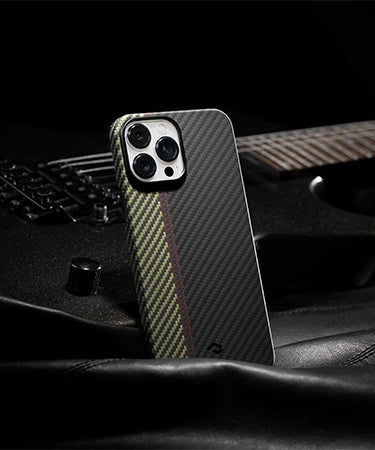
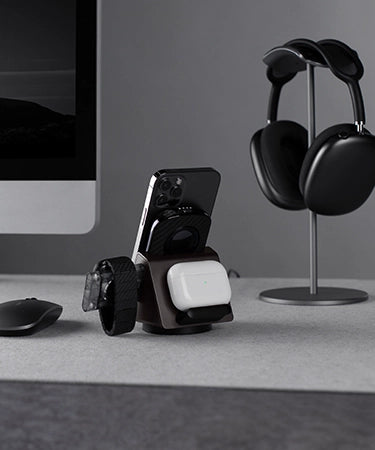


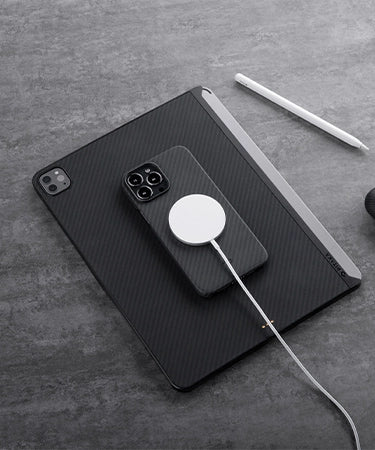



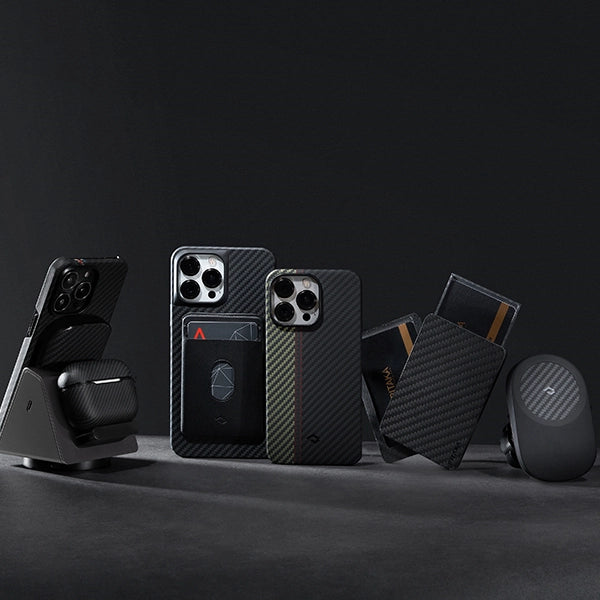



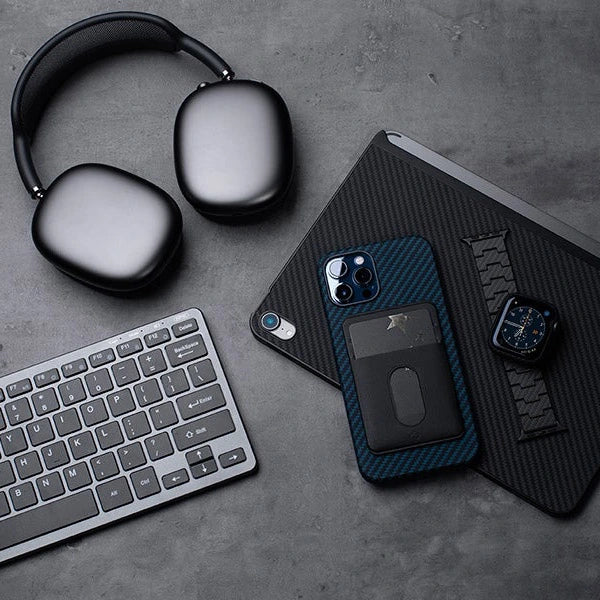



Thanks for sharing the useful information. I have a great collection of phone cases and after reading your article, I got many points about it.
yeet